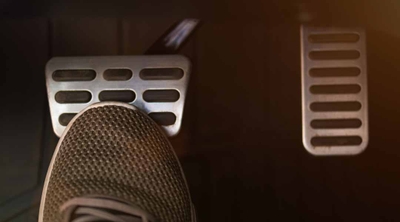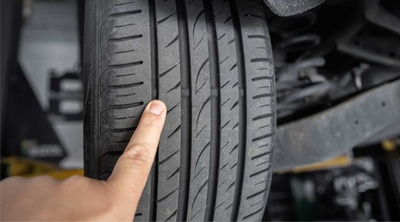Tire numbers explained
3 min read
How often do you think about your tires? They may not be the most exciting aspect of car ownership, but tires are critical to your vehicle’s performance and safety. Worn-down tires don’t just limit performance. They also pose a serious and easily avoidable risk to you, your passengers, and others on the road.
We’ll explain tire size numbers and provide tire maintenance tips to help you understand the tire requirements for your car, how to care for them, and when it’s time for a new set.
How to read tire sizes and numbers
Tires come in various sizes and specifications, and it’s vital to use tires that are compatible with your vehicle. You will find the tire sizing and number information on a sticker or plaque on your vehicle, generally on the inner panel or pillar of the driver’s door. This plaque will define your car’s tire size, load requirement, and optimal inflation pressure.
For example, here’s a hypothetical tire size: 215/50R17 91H. That collection of numbers and letters indicates the tire’s sizing specification.
If you haven’t changed the wheels on your car, you can follow the manufacturer’s tire sizing requirements. If you can’t find this information, or if your car has aftermarket wheels, a tire shop or your vehicle’s manufacturer will confirm the proper tire sizing.
Tire size numbers explained
Use the guide below as a tire size decoder and watch our tire decoder video to learn more.
- 215: The width of the tire in millimeters
- 50: The height of the sidewall as a percentage of the tire width (50 percent of 215 mm)
- R: Radial (a common type of modern tire)
- 17: The wheel diameter in inches — in this example, the car uses 17-inch wheels
- 91: Load rating is the weight the tire can carry and must match/exceed your car’s requirements
- H: The tire’s speed rating (from L to Z, with “H” indicating a maximum speed of 130 mph)
Tire maintenance tips
Having the right tires on your vehicle will maximize its performance. Many standard family-car tires can last up to 70,000 miles, but only when properly cared for and maintained. Luckily, proper tire maintenance and general car maintenance are straightforward. Here are some tire maintenance tips to keep your tires at peak performance.
Check tire pressure
This is serious. An underinflated tire will wear out faster, use more fuel, and provide less grip. If your car doesn’t have a tire pressure monitoring system, you must monitor tire pressure yourself. You can buy a tire gauge and check your tire pressure monthly when the tires are cold (warm tires will report higher-than-actual pressure as the heat expands the air inside the tire).
You can find the optimal pressure for your car listed on the same plaque that displays the previously mentioned sizing information. Learn more about how to check tire pressure.
Check for tire damage
When checking tire pressure, check for visible damage, including cracking, warping, or objects embedded in the tire. If the tire is damaged, consult your local tire shop immediately. Learn how car insurance covers tire damage.
Check that tires are aligned
If your car’s alignment is off (meaning it doesn’t drive in a straight line when the steering wheel is at the center) your tires won’t wear evenly. Ask your mechanic to check your alignment if the car pulls in either direction or if your tires show uneven tread wear. Proper alignment will ensure optimal performance and life from your tires.
Get tires rotated approximately every 6,000 miles
When you buy new tires, the shop will tell you when you need to rotate them — some recommend no more than 6,000 miles. If you’re not given a window sticker as a reminder, mark your calendar to have your tires checked at your next service interval. Proper rotation dramatically extends the life of your tires.
Many shops include free rotation as part of the cost of having your tires mounted when you buy them.
Check the tire tread depth
There are several ways to check your tires’ tread depth. You can use a tire tread depth gauge or get help from Honest Abe. That’s right — if you’re in a pinch, you can use a penny to gauge your tread’s safety. If you can see the top of Lincoln’s head, you need new tires. Learn more about how to check tire tread depth.




